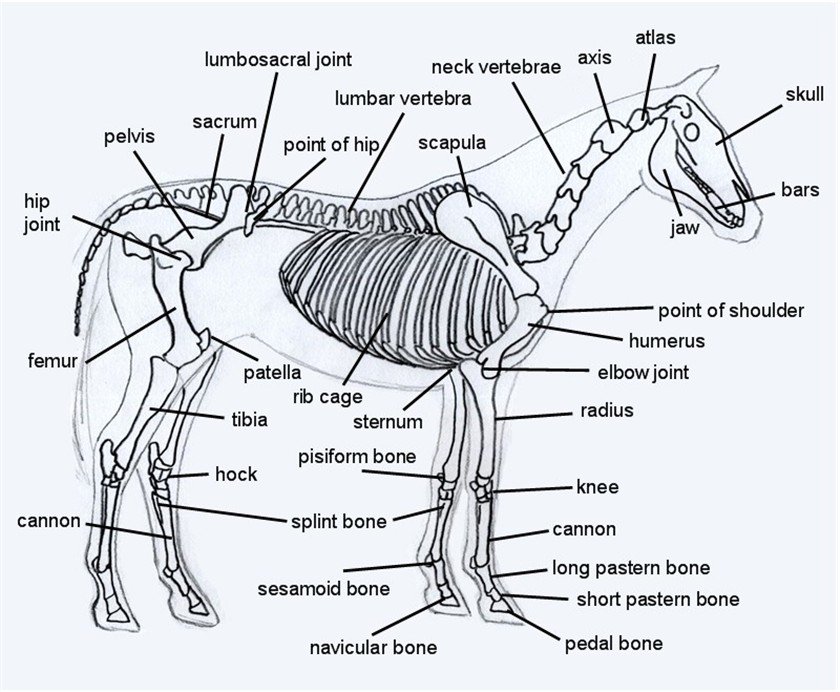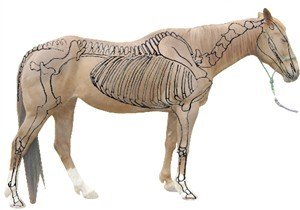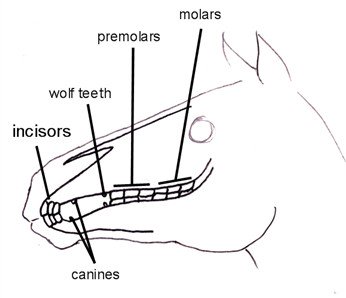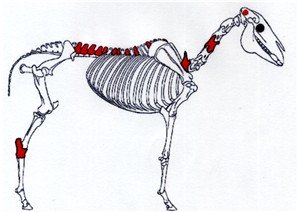Horse Skeleton Diagram
Bone Up on Your Horse's Framework
Take a look at this drawing of a horse skeleton. You are looking at about 205 bones that make up the equine skeletal anatomy. The more you study this picture the better understanding you will have of how a horse is built and how he moves.
Proper nutrition during pregnancy and the early formative years of a horse will ensure a healthy bone structure. Inadequate nutrition during these times will stunt the bone growth in a foal, while an overabundance of certain nutrients will cause the bone to grow too rapidly, causing joint damage.
A poorly put together equine skeleton = horse with poor conformation
Good conformation in a horse starts with the bones. A horse with poor conformation will not have the endurance or hardiness of an animal born with a well formed horse skeleton. They will be more prone to injury of the joints and ligaments, and when used hard, usually do not have the longevity of usefulness over their lifetime.
The neck is the most flexible portion of the horse’s spine. A quick glance at this skeleton horse will show you where the vertebrae of the neck are placed. When giving vaccines you will avoid this area of the neck. Horses with longer necks have a slight speed advantage over horses with shorter necks.
In viewing the skull, you can clearly see the bars of the horse’s mouth. This is the section of the jaw that has no teeth, where the bit lies on the horse’s gums. When you are fitting a bridle to a horse, you’ll want to ensure the bit does not interfere or bump the teeth, causing pain.
You can see by looking at the horse skeleton that weight is best carried directly behind the withers. This area has the support of the rib cage and the sturdy shock absorbing structure of the knee bones in the front legs.
Did you know that the front legs are not attached to the rest of the skeleton? The shoulders of the horse are held close to the body by layers of muscle. Kind of like a giant sling.
A Balanced Horse Skeleton is the Key to Soundness
Horses have limited flexibility of the lower spine. Poor conformation of the back legs forces the lower back to absorb more shock than it is designed for. Over time this can cause the vertebra to fuse together. Placing weight over the loin area puts undue stress on the lower back causing bone damage and stress to the kidneys.
An unhindered lower back allows the horse to reach further forward with his back legs when running, thus gaining more speed. This flexibility also allows a horse to place more weight on their back legs when maneuvering fast turns.
The bones of the horse skeleton are held together with ligaments, tendons and muscles. When the skeletal structure is properly proportioned the joints work smoothly. One bone works in relation to another. If the angle at witch these bones are working is compromised, the joint becomes unevenly stressed and injury to the tendons and ligaments become more likely.
Stressful angles to the joints can come from poor conformation, poor hoof trimming practices or repetitive strenuous hard work. In combination, these three factors add up to an increased likelihood of leg injury in the horse.
The better proportioned the skeleton, the better athlete the horse will be. Understanding how a particular horse is put together lets you know if that horse is capable of living up to your expectations.
In fact, not every horse has perfect conformation. Many horses with conformation faults make wonderful pleasure horses. Not every horse is expected to perform in high physically demanding athletic competitions and working conditions. With proper nutrition and exercise, horses with an imperfect equine skeletal structure can lead a very long and productive life, so long as they are not exposed to overly demanding stresses on the skeleton.
More Equine topics You May Enjoy
Horse Hoof Anatomy
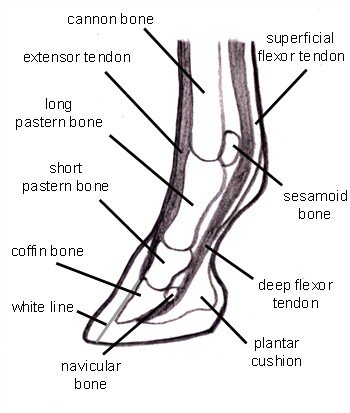
See horse hoof anatomy inside and out for a better understanding of your horse's feet.
Halloween Horse Costume Ideas
Fun Horse Halloween costume ideas from skeleton horse to war horse for D.I.Y horse costume fun.
Equine Chiropractic
The horse skeleton is a beautiful map showing the perfect weight bearing running machine! Learn the benefits of equine chiropractics with Dr. Sue Thompson DVM.
Bone Spavin
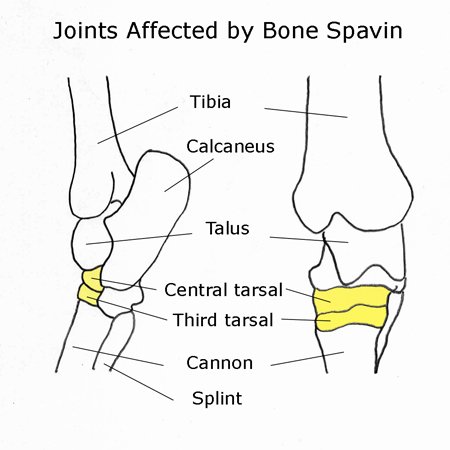
Learn to recognize Bone Spavin before you purchase a horse or how to manage it in a horse you already own.
